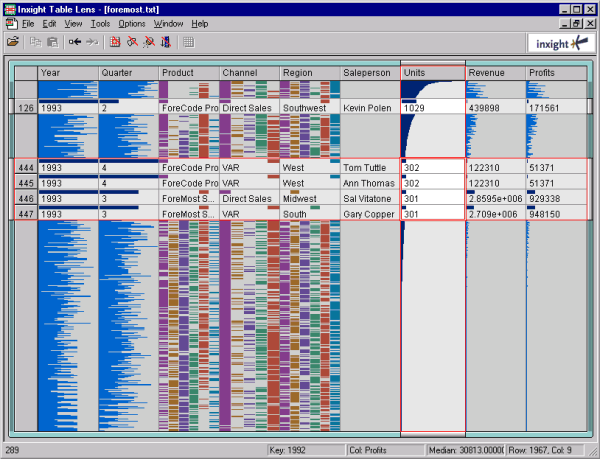|
Milestones in the History of
Thematic Cartography, Statistical Graphics, and Data Visualization |

|
|

|
| 1975-present | Fourfold display | Mosaic displays | Table lens |
|
Milestones in the History of
Thematic Cartography, Statistical Graphics, and Data Visualization |

|
|

|
| 1975-present | Fourfold display | Mosaic displays | Table lens |
| Up: Milestones | Introduction | Related | References | Term Index | Images: 1975+ | ||
With this disclaimer, a few major themes stand out:
These developments in visualization methods and techniques arguably depended on advances in theoretical and technological infrastructure. Some of these are: (a) large-scale software engineering; (b) extensions of classical linear statistical modeling to wider domains; (c) vastly increased computer processing speed and capacity, allowing computationally intensive methods and access to massive data problems.
In turn, the combination of these themes and advances now provides some solutions for earlier problems.
| Up: Milestones | Introduction | Related | References | Term Index | Images: 1975+ | ||